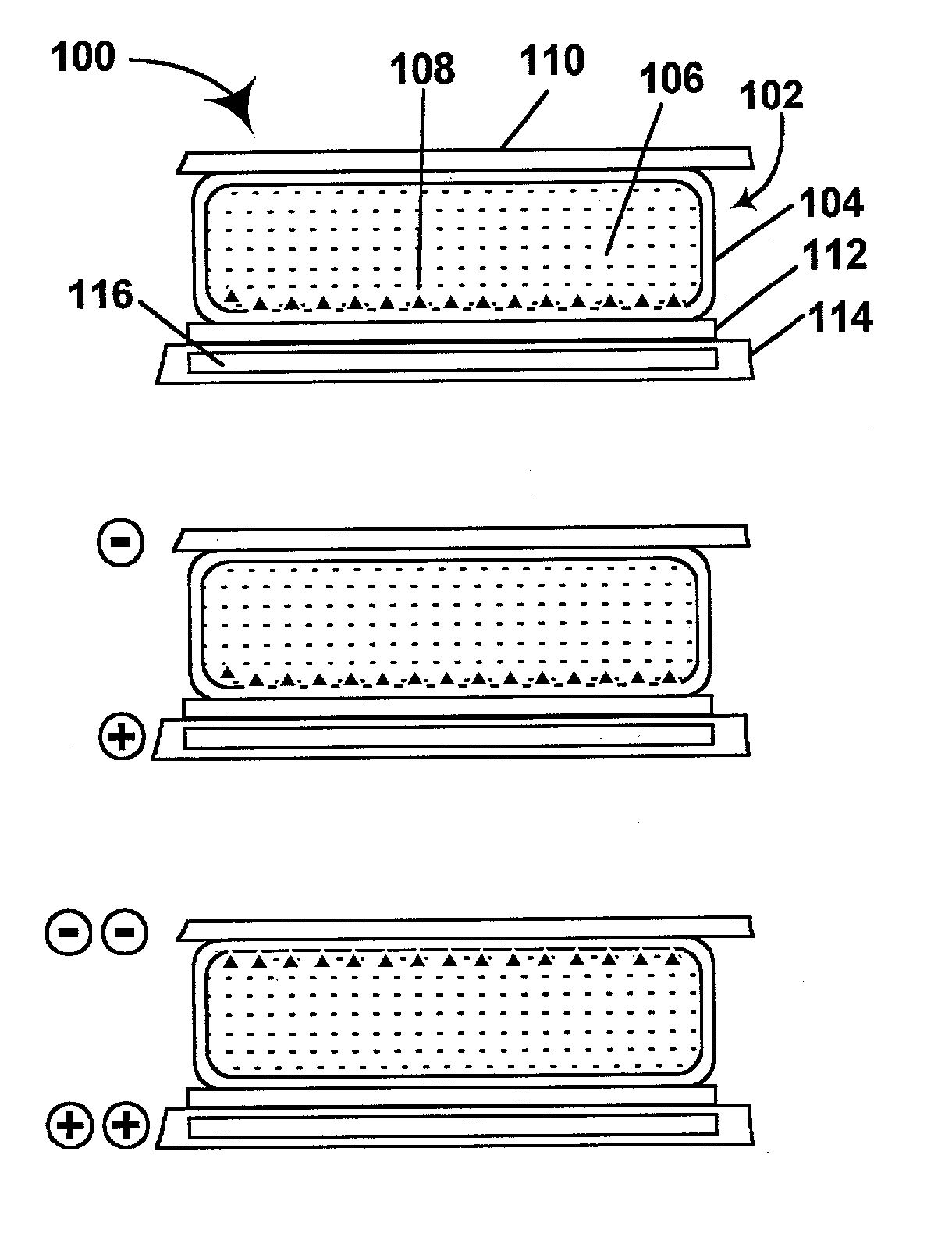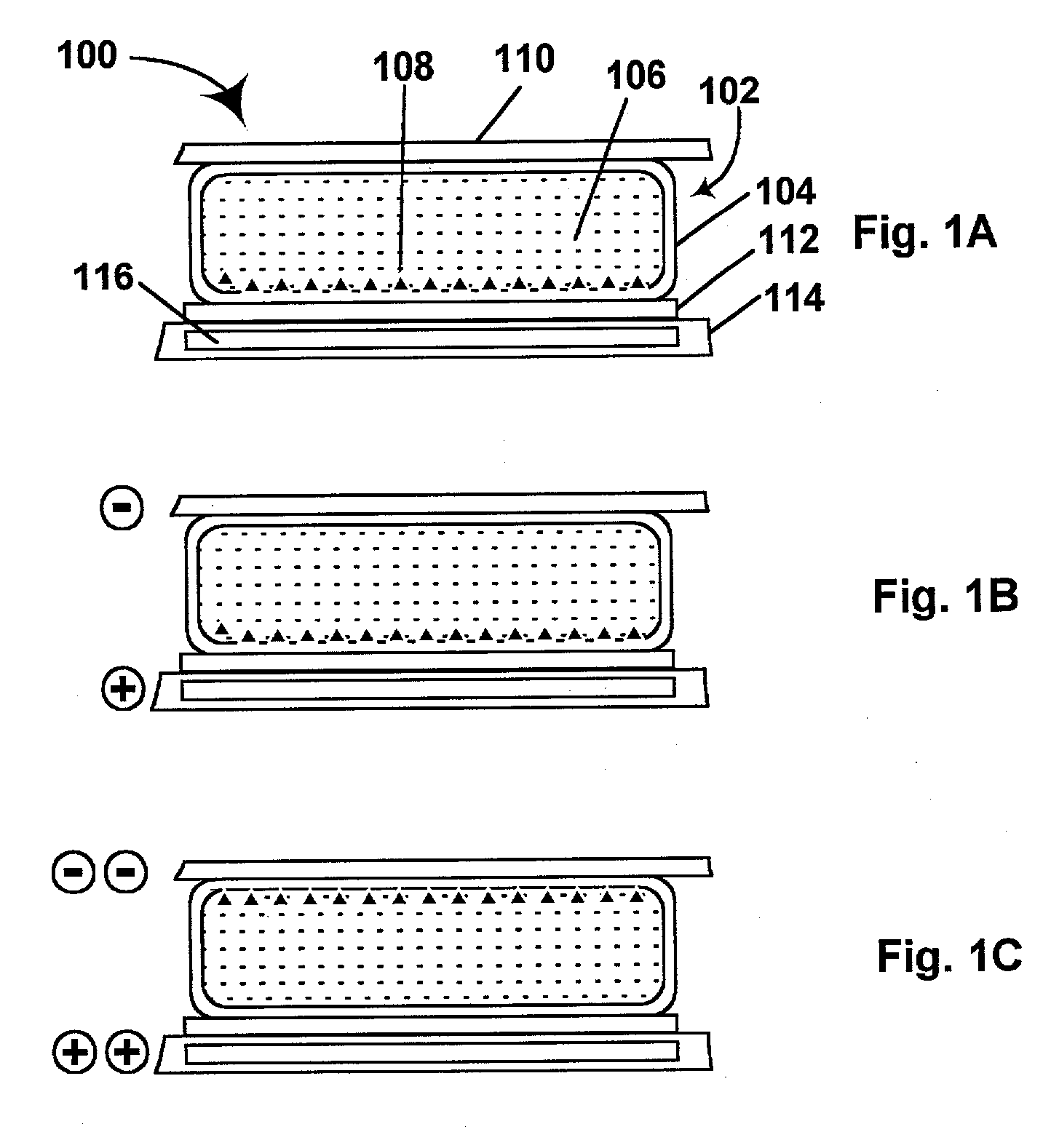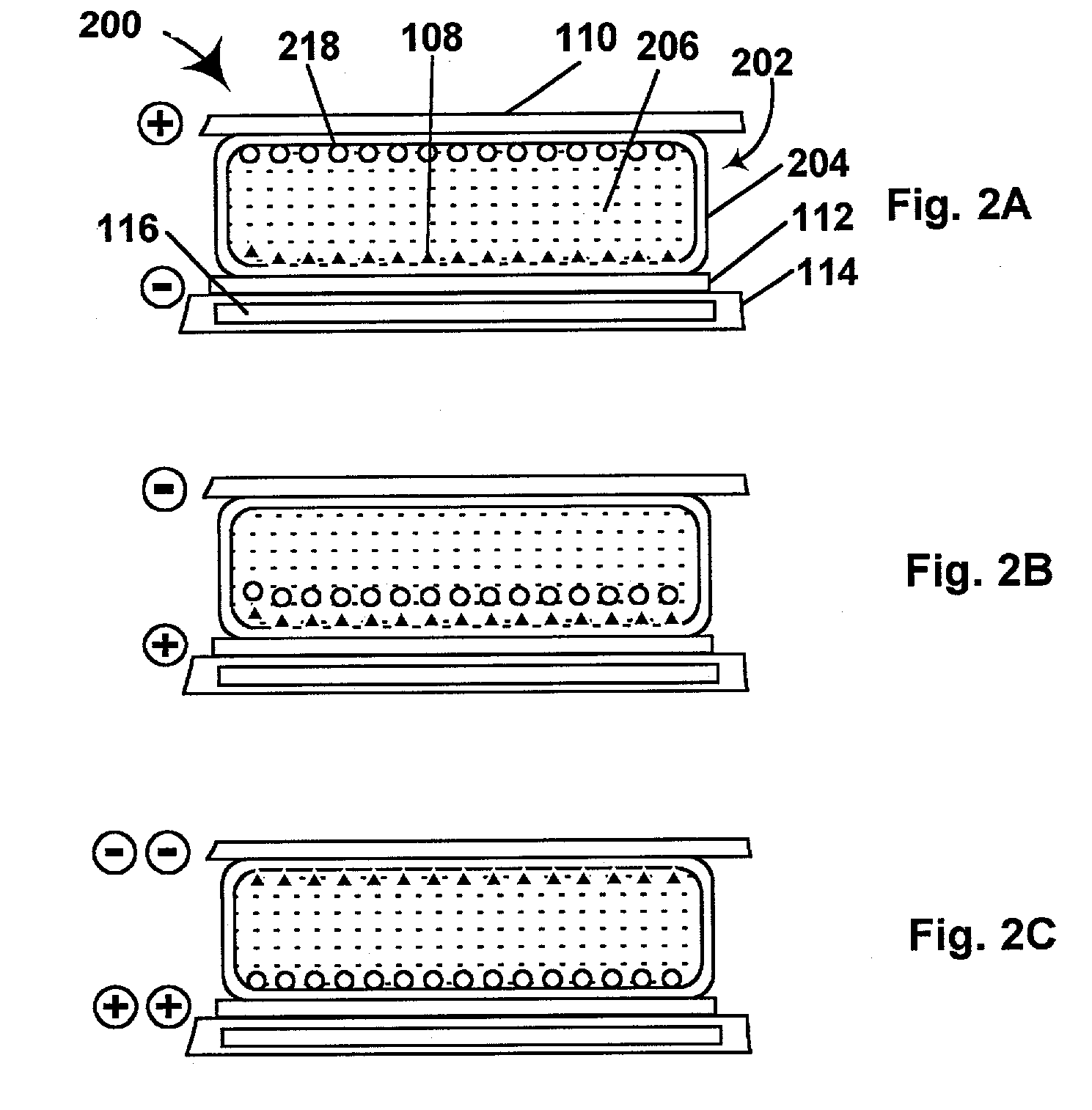Electrophoretic displays containing magnetic particles
a technology of magnetic particles and display panels, applied in the field of electrotrophoretic displays, can solve the problems of preventing their widespread use, displaying more than two colors, and inadequate service life of these displays
- Summary
- Abstract
- Description
- Claims
- Application Information
AI Technical Summary
Problems solved by technology
Method used
Image
Examples
example 2
[0131] This Example illustrates reaction of the silica-coated pigment prepared in Example 1 with a bifunctional reagent in the first stage of a process to provide a polymer-coated magnetite useful in the electrophoretic media and displays of the present invention.
[0132] To a mixture of ethanol (1000 ml) and water (100 mL), concentrated ammonium hydroxide was added until the pH reached 9.0-9.5, N-[3-(trimethoxysilyl)-(4-vinylbenzyl)ethylene diamine hydrochloride (40 g of a 40 weight per cent solution in methanol) was added, and the resultant solution was stirred rapidly for 4 minutes. The silica-coated magnetite (50 g) prepared in Example 1 was then added, and the mixture stirred rapidly for 7 minutes. The resultant suspension was poured into plastic bottles and centrifuged at 3500 rpm for 30 minutes. The supernatant liquor was decanted, and the silanized pigment re-dispersed in ethanol and centrifuged at 3500 rpm on the same centrifuge for 30 minutes, and the liquid decanted. The wa...
example 3
[0133] This Example illustrates conversion of the silanized pigment produced in Example 2 to the corresponding polymer-coated magnetite.
[0134] The silanized pigment produced in Example 2 (50 g) was placed in a round-bottomed flask with toluene (50 g) and lauryl methacrylate (50 g). The resultant mixture was stirred rapidly under a nitrogen atmosphere (argon may alternatively be used) for 20 minutes, then slowly heated to 50.degree. C. and AIBN (0.5 g in 10 ml of toluene) added quickly. The suspension was then heated to 65.degree. C. and stirred at this temperature under nitrogen for a further 18 hours. The resultant viscous suspension was poured into plastic bottles, the flask being washed out with ethyl acetate to remove residual product and the ethyl acetate solution added to the bottles. The bottles were centrifuged at 3500 rpm for 30 minutes. The supernatant liquor was decanted, and the polymer-coated pigment re-dispersed in ethyl acetate and centrifuged at 3500 rpm for 30 minut...
example 4
[0135] This Example illustrates the preparation of a polymer-coated titania useful in the electrophoretic media and displays of the present invention.
Part A: Preparation of Silanized Titania
[0136] To a 4 L glass reactor equipped with a stirrer and a pH meter were added ethanol (930.7 g) and deionized water (69.3 g), and the resultant solution was stirred at 150 rpm. The probe of the pH meter was inserted into the reactor and the pH of the mixture was lowered to 4.5 by adding glacial acetic acid from a pipette. The pH probe was then removed, 3-(trimethoxysilyl)propyl methacrylate (160.0 g) was added to the reactor, and the reaction mixture was stirred for a further 5 minutes. The mixing speed was then increased to 250 rpm, titania (1000 g of du Pont R960) was added to the reactor, and the reaction mixture was stirred for a further 10 minutes. The mixing speed was then decreased to 200 rpm, ethanol (1826.6 g) was added to the reactor, and stirring was continued for 1 minute. The react...
PUM
| Property | Measurement | Unit |
|---|---|---|
| size | aaaaa | aaaaa |
| poling widths | aaaaa | aaaaa |
| particle size | aaaaa | aaaaa |
Abstract
Description
Claims
Application Information
 Login to View More
Login to View More - R&D
- Intellectual Property
- Life Sciences
- Materials
- Tech Scout
- Unparalleled Data Quality
- Higher Quality Content
- 60% Fewer Hallucinations
Browse by: Latest US Patents, China's latest patents, Technical Efficacy Thesaurus, Application Domain, Technology Topic, Popular Technical Reports.
© 2025 PatSnap. All rights reserved.Legal|Privacy policy|Modern Slavery Act Transparency Statement|Sitemap|About US| Contact US: help@patsnap.com



